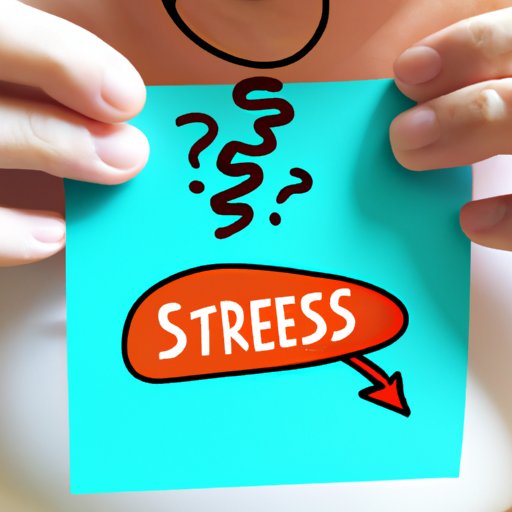
Introduction
When it comes to physical changes that occur in the body during times of stress, many of us are familiar with the classic symptoms: racing heart, sweating, tense muscles, and so on. But did you know that stress can also impact the appearance and shape of your belly? Known as a “stress belly,” this type of stomach is a common and often visible manifestation of chronic stress. In this article, we will explore what exactly a stress belly looks like, as well as its causes and the emotional and physical effects it can have on the body.
Research Studies on Stress and the Gut
The effects of stress on the gut are well documented in scientific research, and a number of studies have explored the relationship between chronic stress and gut health. Some of the most prominent findings suggest that stress can cause gastrointestinal symptoms such as abdominal pain, diarrhea, and constipation, as well as alter the diversity of gut bacteria. An increasing body of research is also highlighting the role of the gut-brain axis and the connection between emotional state and digestive health.
One illustrative example of the effects of stress on the gut is the way it can contribute to the development of a stress belly. Essentially, the ongoing activation of the stress response system can cause changes in the body’s metabolism and hormonal balance, leading to increased fat storage in the abdomen area. This can be especially problematic for individuals with a genetic predisposition to belly fat, as cortisol (the stress hormone) has been linked to an increase in fat accumulation in the stomach area.
The Emotional and Physical Effects of Chronic Stress on the Body
In addition to its impact on the gut, chronic stress can have a wide range of other emotional and physical effects on the body. From mood swings and increased anxiety to muscle tension and headaches, stress can take a significant toll on our overall health and well-being. When it comes to the stress belly, evidence suggests that the body’s response to ongoing stress can lead to increased cortisol levels and subsequent belly fat accumulation.
Psychological Stress and Hormonal Imbalance
One key factor in the development of a stress belly is the way that psychological stress can disrupt the body’s hormonal balance. Specifically, chronic stress can trigger the release of cortisol, a hormone that helps to regulate blood sugar levels and blood pressure. While cortisol can be beneficial in small doses, prolonged activation of the stress response can result in elevated cortisol levels that contribute to insulin resistance and abdominal weight gain.
How Stress Changes Our Body’s Shape and Size
So how exactly does stress impact the appearance and size of our belly? When we experience stress, our bodies enter into fight or flight mode, releasing cortisol and other hormones as part of the response. These hormones cause an increase in glucose levels, which can be used by the body for immediate energy in case of danger. However, when this response is activated repeatedly over time, the excess cortisol in the blood can lead to a buildup of visceral fat in the abdominal area. This type of fat is often referred to as “active fat,” as it can release inflammatory compounds that are linked to chronic diseases such as heart disease and diabetes.
Anecdotal Evidence of Different Types of Stress Bellies
While stress bellies can affect individuals of all body types, there are some noticeable differences in the way they present based on factors such as gender, age, and overall body composition. For example, women may be more likely to develop a stress belly due to hormonal changes during menopause, while men may exhibit a more apple-shaped belly due to their higher levels of visceral fat. Additionally, some individuals may develop a stress belly that is more bloated in appearance, while others may experience a harder, more protruding belly.
Identifying a Stress Belly: A Comprehensive How-To Guide
If you suspect that you may have a stress belly, there are a number of key characteristics to look out for. For example, stress bellies often have a more rounded, protruding appearance, with excess fat distribution that is concentrated in the abdominal area. You may also notice that your belly feels firm or hard to the touch, or that you experience bloating or discomfort after eating.
If you are struggling with a stress belly, there are a number of steps you can take to tackle the issue. Some helpful tips include practicing stress reduction techniques such as deep breathing or meditation, engaging in regular physical activity, and making dietary changes to incorporate more whole foods and reduce processed foods, sugar, and alcohol.
Conclusion
In conclusion, the physical effects of chronic stress can take a noticeable toll on our bodies, and a stress belly is one such visible manifestation. By understanding the relationship between stress and gut health, as well as the impact of stress on hormonal balance and body shape, we can take proactive steps to reduce stress and improve our overall well-being. Whether through lifestyle changes, targeted therapies, or simply taking time for self-care, there are a range of strategies we can use to fight back against the effects of stress and cultivate a healthier, happier body.





